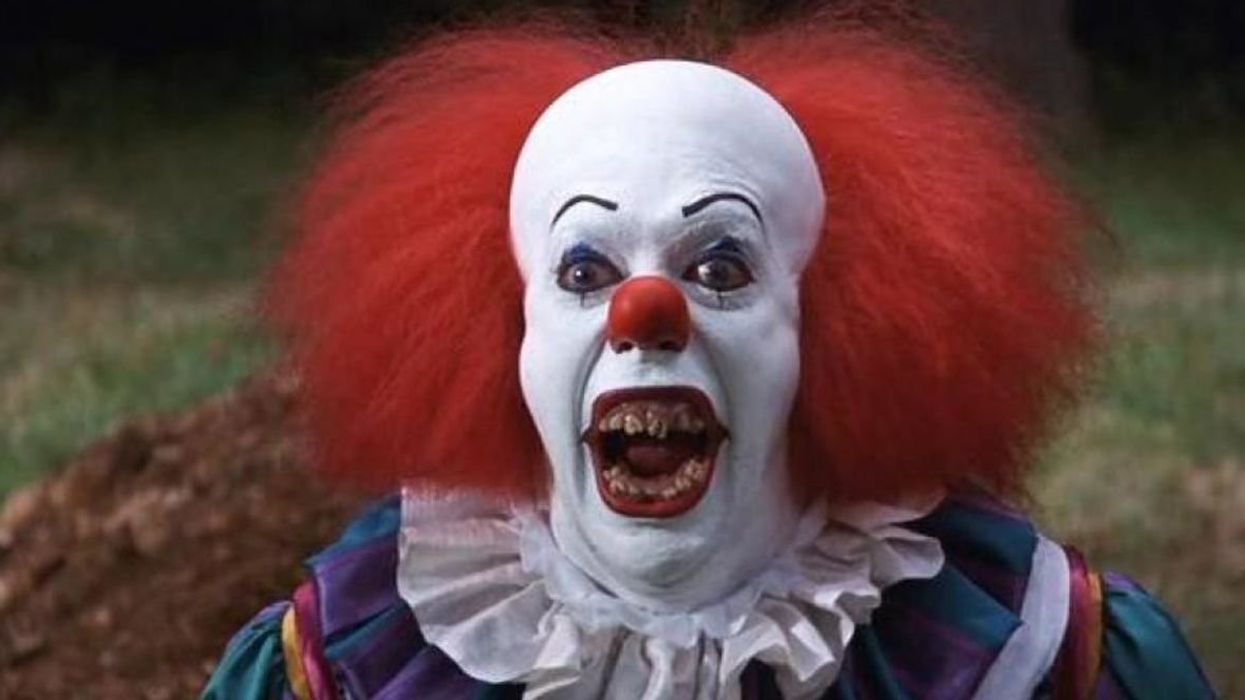Watch: Why Pennywise is Such a Scary Horror Villain
This classic scientific concept can help us create terrifying villains.

Why exactly is Pennywise from It so terrifying? It may be as much due to a theory from robotic science as it is a factor of great cinematic storytelling. Before we begin, it should be noted that, in the words of video essayist Karsten Runquist, while "technically Pennywise is an undefined morphable character....for the most part he's a clown."
Clowns are currently all over pop culture, for instance appearing in the current season of American Horror Story. And, morphable though It might be, Pennywise the Clown is the main attraction in the story. This video looks at the roots of Pennywise's effectiveness of as a horror villain by examining, among other things, the concept of the Uncanny Valley, as well as his status as a modern-day troll (not the internet kind, though.)
The Uncanny Valley
Runquist cites the theory first advanced by Masahiro Mori in 1970 known as the "Uncanny Valley", a concept in robotics which "is defined as a level of realism in robots in which the human observer has a negative reaction. Any less realistic and we feel empathy; any more realistic and we can't distinguish that it's artificial." Now, Runquist holds that the theory is equally valid if one substitutes "clown" for "robot". Here's a picture illustrating the Uncanny Valley:
Coulrophobia
Defined as a phobia of clowns, coulrophobia has roots that extend beyond the movie/novel It, of course. Some trace the modern fear of clowns to serial killer John Wayne Gacy, whose Pogo the Clown persona concealed unspeakable evil, and while Stephen King has said that when writing the novel It, his initial inspiration was the idea of a "troll under a bridge," another was an acknowledged childhood fear of clowns.
In addition to Gacy, the modern fear of clowns can, somewhat ironically, be traced partly to King's novel. As a contemporary sort of boogeyman, clowns are a perfect stand-in for trolls, which became, over the past few decades, much less frightening than they had been in popular culture.
The Sewers
King has said that while he originally thought of the idea of a troll "under a bridge," this slowly changed into something else when he began to think of his long-time home, Bangor, Maine. "I started thinking of Bangor, where I had lived, with its strange canal bisecting the city....What's under a city? Tunnels. Sewers. Ah! What a good place for a troll! Trolls should live in sewers!" This idea has been used in both adaptations of It, to striking visual effect, for instance, in the infamous first scene, when Georgie's encounter with Pennywise sets the story in motion. The sewers, of course, play a huge role in the rest of the story, too.
Sewers also play up the idea of ambiguity. In Runquist's words, "the mystery behind Pennywise as a character makes him what he is. Referring back to the iconic first scene, the shot leaves out so much information about what or who he is....[for instance] what is he doing in a sewer? The more we know about any given situation the less afraid we are." The fact that we have a clown (frightening to begin with, at least to many), who lives in the sewers, his presence ambiguous other than as a senseless avatar of malevolence, is a sure recipe for terror, and definitely a huge part of what makes Pennywise such an iconic and effective horror villain.
Source: Karsten Runquist












